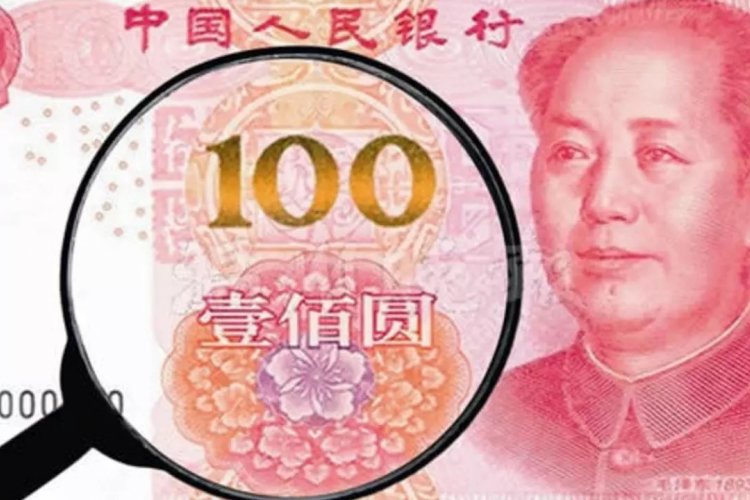How China's Provinces Came to Have Their Single Word Abbreviations
Mandarin Monday is a weekly column where we help you improve your Chinese by detailing learning tips, fun and practical phrases, and trends.
If you've been paying attention to the Chinese news over the past few months, you may have noticed a few shorthand phrases that frequently appear in headlines, such as "返京 fǎn jīng," return to Beijing, and “离鄂 lí è” leave Hubei. But how are you meant to know that “返京 fǎn jīng” refers to Beijing (北京) and not Nanjing (南京), or even Tokyo (东京) for that matter? And what the hell is “鄂 è” again? Does it have anything to do with a crocodile (鳄 è)?
Actually, these confusing single characters are abbreviations for China's provinces, and it's unlikely to be the first time you've come across them – just look closely at each car’s number plate next time you're taking a stroll. Though cars are most likely the easiest place to see these letters on a daily basis, they were not in fact invented for vehicle registration purposes but have in certain provinces long existed, often changing to reflect historical events or administrative planning. However, the official, unified system was settled around the end of the Qing dynasty, more than a century ago, for one simple and practical consideration: to reduce the need for space and time when writing telegrams. That handiness wasn't lost on China's general population and the letters have since gone mainstream.
According to the ways provinces were granted their single-character name, there are a few basic categories we can sort them by.
1. Provinces that take part of their name as an abbreviation
Beijing - 京 jīng (北京市 běijīng shì) - 京 originally means 'artificial hills,' since China's capitals were often built on highlands. Its meaning then gradually became synonymous with 'the capital' throughout history.
Tianjin - 津 jīn (天津市 tiānjīn shì) - During the Ming dynasty, a prince built an army where modern-day Tianjin now stands and marched to the south to usurp his nephew and emperor Ming Hui. Therefore, the city is memorized as the emperor's (天子 tiānzǐ) port (津 jīn) i.e. 天津 tiānjīn.
Heilongjiang - 黑 hēi (黑龙江省 hēilóngjiāng shěng) - The city of Heilongjiang, which takes its name from the river that flows through it, was first built in 1671 to defend attacks from Tsarist Russia.
Jilin - 吉 jí (吉林省 jílín shěng) - Jilin originates from the Manchu word 吉林乌拉 jílín wūlā, which means 'the city by the Songhua River.'
Liaoning - 辽 liáo (辽宁省 liáoníng shěng) - The earliest record of 辽 liáo being used to refer to Liaoning dates back to the Qin dynasty, and is also inspired by the river that flows through it. It was officially named 辽宁 liáoníng (宁 níng means peace) in 1929 in hope of keeping the peace in this region intact.
Xinjiang - 新 xīnjiāng (新疆维吾尔自治区 xīnjiāng wéiwú'ěr zìzhìqū) - 新疆, meaning 'new frontier,' was first used in 1884 after the Qing dynasty reclaimed the region from a rebel tribes.
Tibet - 藏 xīzàng (西藏自治区 xīzàng zìzhìqū) - In Yuan and Ming dynasty, the Tibetan region was known as 乌斯藏 wū sī zàng, where乌斯 wū sī means 'center' and 藏 zàng means 'holy.' Finally, since it's located in the west of China, people refer to it as 西藏 xīzàng.
Qinghai - 青 qīng (青海省 qīnghǎi shěng) - Named after the biggest saltwater lake in China, 青海湖 qīnghǎi hú.
Jiangsu - 苏 sū (江苏省 jiāngsū shěng) - This province has been separated or merged into other provinces multiple times throughout history, which explains why it's single-character name does not allude to the province. The abbreviation therefore comes from the major city of 苏州 sūzhōu.
Zhejiang - 浙 zhè (浙江省 zhèjiāng shěng) - 浙 is derived from the long and winding rivers within Zhejiang's territory, and was first used during the Ming dynasty.
Ningxia - 宁 níng (宁夏回族自治区 níngxià huízú zìzhìqū) - Around 500AD, a noble from Huns tribe defined this area as the kingdom of 夏 xià, an area whose sovereignty was repeatedly challenged before eventually being conquered by the Yuan dynasty. In an attempt to put an end to the war and chaos that had haunted the area, the region's new overseers added 宁 níng (peace) to its name.
Hong Kong - 港 gǎng (香港特别行政区 xiānggǎng tèbié xíngzhèngqū) - 港 comes from its function as the port (once primarily for spices).
Macao - 澳 ào (澳门特别行政区 àomén tèbié xíngzhèngqū) - Macao used to be called 蚝镜 háo jìng (oyster mirror) which comes from the abundant oysters nearby and the mirror-like surface of the surrounding gulf. 澳 ào, bay or harbor, was added later on account of it becoming a port among foreign merchants.
Taiwan - 台 tái (台湾省 táiwān shěng) - Taiwan's name comes from looking geographically similar to a platform (台 tái) in the ocean.
2. Provinces named according to their historical name
Shanghai - 沪 hù (上海市 shànghǎi shì) - It was merely a fishing village around the early age of North Song Dynasty. The dwellers here invented a fishing tool made from bamboo and named it 扈 hù which pronounced the same as 沪 hù and gradually became the name of this region. (You may also see 申 shēn used for Shanghai, for example, in the name of their local football team, and is derived from the region's former history as a fief overseen by Chunshen of the Chu Kingdom (楚春申君 chǔchūn shēn jūn).)
Guangxi - 桂 guì (广西壮族自治区 guǎngxī zhuàngzú zìzhìqū) - More than half of this province once belonged to 桂林郡 guìlín jùn, Guilin County, so the province inherited its old administrative name.
Hebei - 冀 jì (河北省 héběi shěng) - In prehistorical China, it is said that a tremendous flood ravaged China, the first king and last tribe leader of China (禹 yǔ) saved the land and divided China into nine states. 冀 jì is one of them, and which is believed to have mostly overlapped with modern-day Hebei province.
Henan - 豫 yù (河南省 hénán shěng) - Similar to Hebei, Henan is another state from China's prehistorical nine states.
Shandong - 鲁 lǔ (山东省 shāndōng shěng) - One of the states during China's Spring and Autumn and Warring States Period as well as the homeland of Confucius (鲁国 lǔ guó).
Shanxi - 晋 jìn (山西省 shānxī shěng) - This region was under the reign of the Country of Jin (晋国 jìn guó) back to the Spring and Autumn Period.
Anhui - 皖 wǎn (安徽省 ānhuī shěng) - Anhui inherited the name of the ancient state 皖 wǎn, which also existed during the Spring and Autumn and Warring States Period.
Fujian - 闽 mǐn (福建省 fújiàn shěng) - First appearing during the Qin dynasty, 闽 is derived from the minority 闽越族 mǐn yuè zú that lived here, and the river 闽江 mǐn jiāng that flows through it.
Hubei - 鄂 è (湖北省 húběi shěng) - Hubei inherited its name (鄂州 èzhōu) during the Sui dynasty. Some historians also believe that ancient tribesmen used to hunt crocodiles (鳄鱼 èyú) in this area, which is why the crocodile character features in its name.
Guangdong - 粤 yuè (广东省 guǎngdōng shěng) - Before the first emperor of the Qin dynasty completed the unification of China, many different tribes regarded this place as their territory. People lived in the center China call it 'the land of one hundred 越 yuè' (minorities), which are remembered as 粤 yuè.
Hainan - 琼 qióng (海南省 hǎinán shěng) - This character has been used to refer to Hainan since the Qin dynasty. In sequence, the island has been called 琼台 qióng tái, 琼州 qióngzhōu, and 琼崖 qióng yá.
3. Provinces whose names are inspired by major rivers
Chongqing - 渝 yú (重庆市 chóngqìng shì) - This region is named after the river 渝水 yú shuǐ, now called the 嘉陵江 jiālíngjiāng, that flows through it.
Hunan - 湘 xiāng (湖南省 húnán shěng) - Named after the river 湘江 xiāngjiāng that flows through much of the province.
Jiangxi - 赣 gàn (江西省 jiāngxī shěng) - Most people believe that the complicated character 赣 gàn comes from the major river 赣江 gànjiāng that flows through Jiangxi province. However, researchers found this character had already previously appeared in the Classics of Mountains and Seas and used to describe a "giant" believed to have created this land. Other scholars hold that this abbreviation derives from the name of the Gaeml minority that has resided in this region for centuries.
4. Provinces that have two abbreviations
Sichuan - 川 chuān/蜀 shǔ (四川省 sìchuān shěng) - 川 chuān comes from the vertically aligned rivers and mountains in the area, while 蜀 shǔ is the name of an ancient country once located in the region during the Three Kingdoms period.
Guizhou - 贵 guì/黔 qián (贵州省 guìzhōu shěng) - Guizhou used to be called 矩州 jǔzhōu before the Song dynasty people found it difficult to discern between 矩 jǔ and 贵 guì in the local dialect, and it eventually took on the name 贵州 guìzhōu in the Yuan dynasty. 黔 qián comes from its old name during the Qin dynasty and the names of mountains and rivers within.
Yunnan - 云 yún/滇 diān (云南省 yúnnán shěng) - Yunnan is located south of 云岭 yún lǐng (Cloud Mountain), and first appeared during the West Han Dynasty. 滇 diān comes from the name of a kingdom that existed here in the Warring States Period.
Shanxi - 陕 shǎn/秦 qín (陕西省 shǎnxī shěng) - 陕 shǎn derives from the name of the major plateau in the province, while 秦 qín comes from the Qin dynasty, which originated here.
Gansu - 甘 gān/陇 lǒng (甘肃省 gānsù shěng) - Gansu's 甘 gān was given to it during the Xia Kingdom (夏 xià) of 宁夏 níngxià fame. It was also called 陇西 lǒngxī in ancient times.
5. And then one very special province that's not like the rest...
Inner Mongolia - 内蒙古 nèiménggǔ (内蒙古自治区 nèiménggǔ zìzhìqū) - 蒙古 ménggǔ used to be the name of the tribe that reigned in Inner Mongolia, while 内 nèi is added so as to distinguish it the neighboring country of Mongolia.
READ: Salty or Sweet? Your Guide to Mastering Sarcasm in Chinese
Image: chinawinecompetition.com







